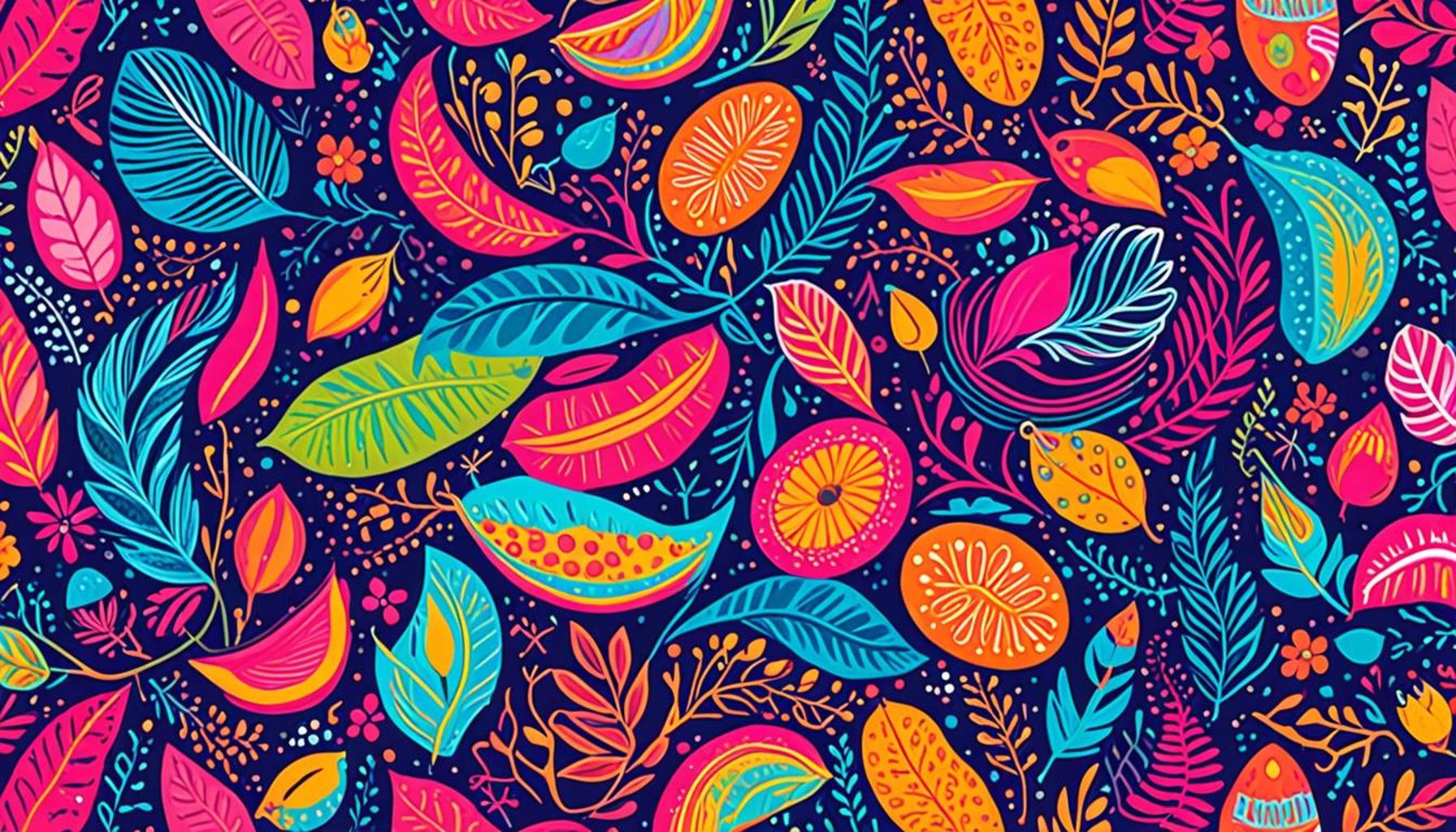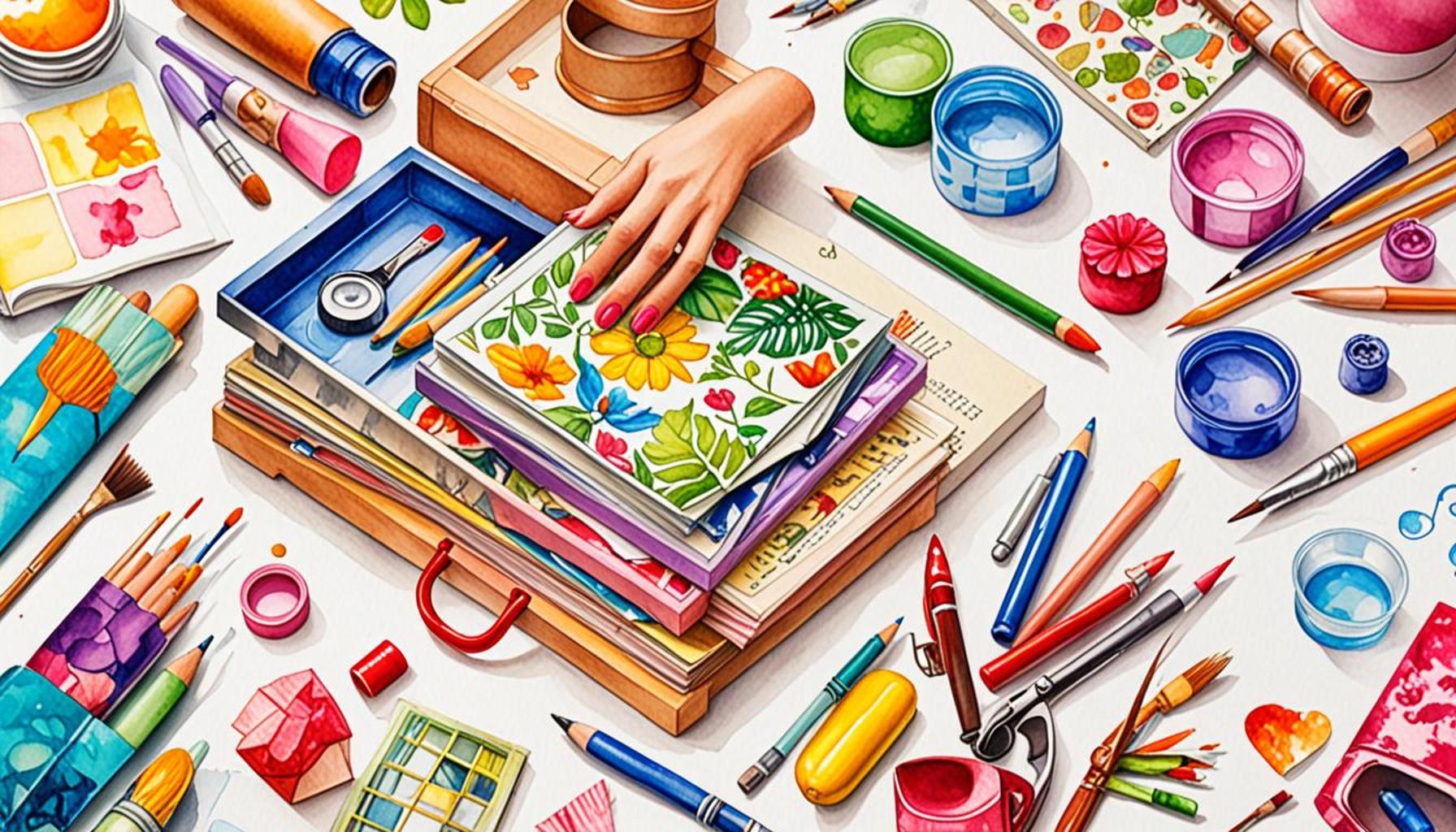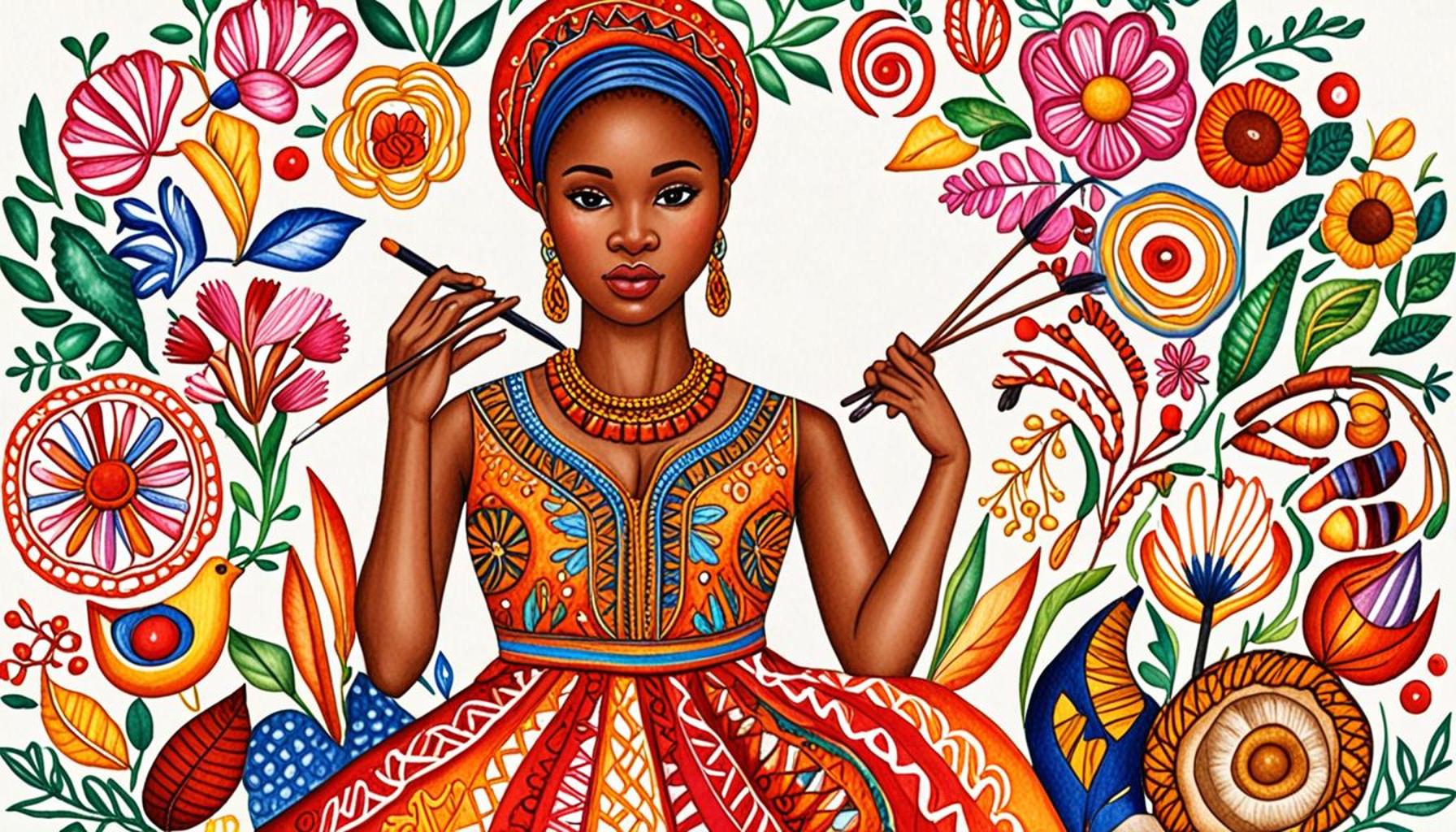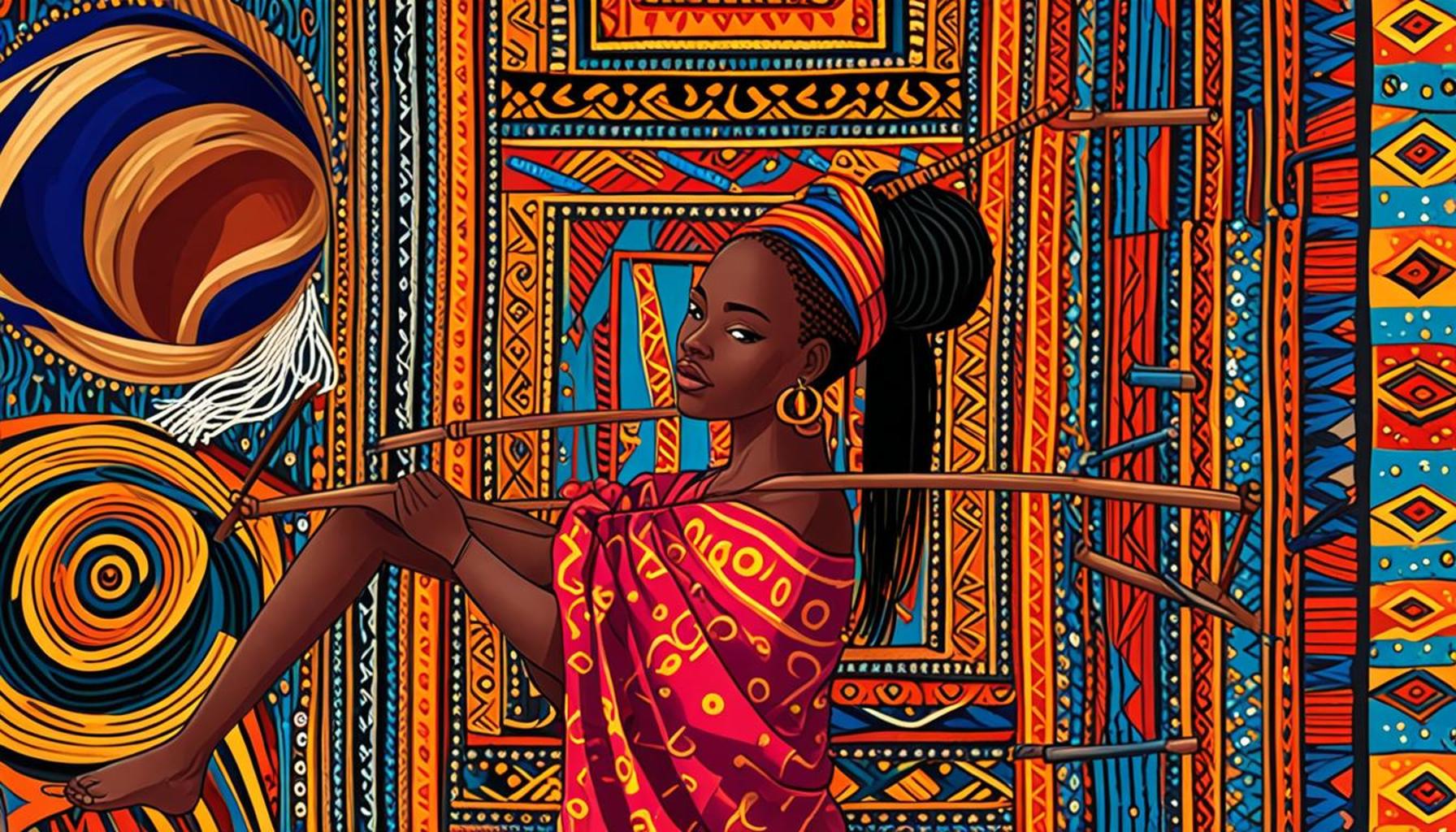Fabric Printing Techniques: Creating Custom Prints with Style

The Magic Behind Different Fabric Printing Techniques
In the dynamic landscape of fashion and home design, the impact of fabric printing techniques cannot be overstated. These methods allow designers and consumers alike to breathe life into textiles, offering an expansive canvas for creativity. Each technique presents unique advantages and opportunities, making it easier than ever to achieve personalized designs that resonate with individual style and cultural expression.
Among the plethora of methods employed in fabric printing, some stand out for their versatility and popularity:
- Screen Printing: This method is celebrated for its ability to produce vibrant, bold colors that can stand out in any design. Typically used for simple graphics and large batches, screen printing is a favorite among urban clothing brands in Nigeria looking to make a statement. For instance, local fashion labels often leverage this technique to create eye-catching t-shirts adorned with culturally relevant motifs, patterns, and messages that reflect Nigerian youth culture.
- Digital Printing: With technology driving creativity, digital printing has emerged as a game changer. This method excels at reproducing intricate patterns and detailed imagery which might be challenging to achieve with traditional methods. Ideal for small runs or custom designs, digital printing allows for an unprecedented level of customization. Nigerian designers can experiment with vibrant prints that celebrate the country’s rich heritage, such as prints inspired by indigenous textiles like Aso Oke.
- Block Printing: Rooted in tradition, this manual technique involves carving designs into blocks of wood, which are then stamped onto fabric. The result is a charming, handcrafted feel that is increasingly popular among artisans in Nigeria. This method not only champions local craftsmanship but also adds a unique touch to every piece. Designers can utilize block printing to create one-of-a-kind items that capture the essence of local cultures and stories.
- Heat Transfer Printing: For those seeking efficiency without sacrificing creativity, heat transfer printing is an excellent choice. This technique allows for the quick application of designs onto fabric using heat and pressure. It’s particularly popular for producing custom merchandise, such as branded apparel for events or promotional items in Nigeria. This method’s accessibility enables budding fashion entrepreneurs to establish their presence in a competitive market.
By understanding these diverse techniques, you gain the knowledge necessary to select the best method suited for your design projects. Moreover, when this knowledge is combined with Nigeria’s rich tapestry of culture and creativity, the potential for impactful designs is limitless. From clothing that celebrates heritage to home décor that inspires, the art of fabric printing serves as a powerful tool for personal and cultural expression.
As we embark on this journey into the realm of fabric printing, we not only uncover various techniques but also explore tips, inspiration, and innovative methods to realize your vision. Join us on this exploration where creativity meets technique, and discover how you can elevate your crafting endeavors in the colorful world of fabric design.
YOU MAY ALSO LIKE: Read read another article

Exploring the Rich Diversity of Fabric Printing Techniques
As creative expression finds its way onto textiles, the range of fabric printing techniques available is astonishing, allowing designers to forge a more personalized connection between their creations and the audience. In Nigeria, where fashion is often a reflection of cultural narratives, these techniques are particularly pivotal, enabling local artisans and designers to tell their stories through cloth.
Let’s delve deeper into some of these fabric printing techniques, exploring each method’s distinct attributes and applications:
- Screen Printing: A favorite within the fashion industry, screen printing stands out for its durability and color vibrancy. In Nigeria, this technique finds extensive use among popular streetwear brands, helping to create bold images and slogans that resonate with the youth. This method allows for variations that can be adapted to showcase various seasons or unique celebrations—be it the colorful attire of festivals or themed t-shirts for cultural events.
- Digital Printing: Marking a turning point in textile design, digital printing facilitates extraordinary flexibility. This method can reproduce intricate patterns and high-resolution images, making it ideal for designers aiming to capture the complexity of Nigerian textiles, from delicate lace designs to intricate beadwork. As the trend towards personalized fashion rises, digital printing offers a perfect solution for small batch orders and custom designs, ensuring that each piece stands out.
- Block Printing: Tied deeply to age-old traditions, block printing brings a hand-crafted authenticity to fabrics. Artisans across Nigeria often engage in this practice, creating detailed patterns that echo local heritage. Each block stamped results in slight variations, imbuing every piece with a unique story—a feature that is highly coveted in a market filled with mass-produced items. Nigerian designers are harnessing block printing not just for apparel, but also for home décor items, allowing the stories of the past to reside within contemporary spaces.
- Heat Transfer Printing: In an era where convenience meets creativity, heat transfer printing simplifies the process of applying designs to fabric. Especially popular among startups and event organizers in Nigeria, this method allows for quick turnarounds on apparel, making it perfect for promotional items and custom merchandise. This technique enables budding creatives to make a substantial impact without the hefty investment often required for traditional printing methods.
With these varied techniques, the possibilities for creating vibrant, unique fabric prints are virtually endless. Designers can seamlessly merge modern techniques with traditional motifs, promoting local culture while embracing innovation. The interplay of technology and craftsmanship is not only shaping the future of fashion in Nigeria but also igniting a vast realm of creative potential.
As we dive deeper into the art of fabric printing, we will uncover not just the methodologies but also practical tips and case studies from successful Nigerian designers who have harnessed these techniques to elevate their brands. The world of fabric printing is rich, and as you continue this exploration, you may find inspiration that leads to your next creative endeavor.
| Techniques | Advantages |
|---|---|
| Digital Printing | High-resolution images created with speed and efficiency, allowing for intricate designs. |
| Screen Printing | Durability and vibrancy of colors, making it ideal for bulk production with consistent results. |
| Sublimation Printing | Seamless integration of printing and fabric, resulting in soft-feel prints that are long-lasting. |
| Block Printing | Artistry and uniqueness with each print, making every piece an original work of art. |
When exploring fabric printing techniques, each method offers unique advantages that cater to different creative needs. Digital printing, for instance, provides high-resolution images generated quickly, making it perfect for detailed designs customizable for individual projects. In contrast, screen printing is advantageous for producing vibrant colors consistently and ensuring durability, which is especially valuable for large-scale applications. Sublimation printing stands out for its ability to create soft-feel prints that subtly blend with the fabric, yielding designs that retain their longevity and brilliance. If your interests lean towards distinctiveness in your prints, block printing may appeal due to the artistry and uniqueness of each piece created, offering a handmade quality that machines simply cannot replicate. To delve deeper into these techniques and discover more about how to utilize them in your own projects, follow our ongoing series on fabric printing innovations.
LEARN MORE: This related article may interest you
Innovative Approaches to Fabric Printing
In the dynamic world of fabric printing, embracing new techniques not only enhances creativity but also revitalizes traditional approaches. As Nigerian designers strive to set themselves apart in a global marketplace, unique methods and materials are becoming essential to creating custom prints with style. Let’s explore more advanced fabric printing techniques that can elevate your creations.
- Engraved Roller Printing: This technique utilizes engraved rollers to transfer designs onto fabric. It allows for rapid, high-quality production of both intricate patterns and large runs of fabric. As this method gains traction in Nigeria, local designers are harnessing it to produce fabrics that highlight traditional patterns reminiscent of indigenous textiles while offering contemporary twists. With the possibility of multiple color applications in a single run, engraved roller printing promises efficiency alongside stunning results.
- Sublimation Printing: Known for its vibrant colors and ability to penetrate the fabric, sublimation printing has become a game-changer in the fashion design landscape. This method is particularly suitable for polyester fabrics or blends, making it ideal for sportswear—a fast-growing segment in Nigeria. As athletes and fashion enthusiasts seek functional yet fashionable apparel, sublimation printing allows for bold, eye-catching designs that reflect the vibrant spirit of Nigerian culture during local sports events.
- Resist Dyeing: This age-old technique, which includes batik and tie-dye, allows artisans to create complex patterns using wax or other resist agents. In Nigeria, the resurgence of traditional dyeing methods is giving rise to a new movement where young designers blend these techniques with modern silhouettes. Each piece created through resist dyeing tells a story of meticulous craftsmanship, making them sought-after items among both local markets and international buyers.
- Foil Printing: Adding a metallic sheen or retro appeal to fabrics, foil printing is becoming increasingly recognized in Nigeria’s textile industry. This technique provides a glamorous touch to custom prints, particularly for special occasions. Local designers often use foil printing to enhance traditional garments like boubous or kaftans, ensuring that cultural aesthetics are preserved while also appealing to more contemporary tastes.
The synergy between tradition and innovation is crucial in the realm of fabric printing techniques. As men and women of creativity compete in Nigeria’s vibrant market, the integration of new methodologies with cultural heritage is creating unique opportunities for storytelling through textiles. By exploring these methods, designers are empowered not only to produce stunning pieces but also to promote Nigerian craftsmanship on the international stage.
In addition to the various techniques, understanding the environmental impact is becoming increasingly essential. Many artisans are now turning to sustainable practices, such as using eco-friendly inks and natural dyes, to appeal to environmentally conscious consumers. This conscientious approach fosters a connection between fashion, culture, and sustainability—a trend that is particularly resonant with the Nigerian youth, who are enthusiastic advocates for both stylish and responsible clothing.
The marrying of modern technology with traditional fabric printing techniques is altogether expanding the boundaries of what can be accomplished in textile design. As designers continue to innovate, the world of fabric printing continues to be a vibrant canvas for exploration and expression, ensuring that every custom print created is not merely a visual statement but a part of a larger cultural narrative.
ADDITIONAL INSIGHTS: Expand your understanding here
Conclusion
The world of fabric printing techniques is a vibrant tapestry, weaving together tradition and innovation to create customized prints that speak to the heart of culture and identity. As designers in Nigeria harness advanced methods such as sublimation printing and engaged roller printing, they expand the possibilities for artistic expression while preserving the rich heritage of local textile crafts. The revival of traditional resist dyeing methods, for instance, highlights the remarkable craftsmanship involved, allowing artisans to narrate cultural stories through intricate designs.
Moreover, as sustainability becomes a pivotal concern, the integration of eco-friendly practices is reshaping the landscape of fabric printing. This shift not only caters to an increasingly environmentally conscious market but also resonates deeply with a younger generation of consumers. They demand fashion that is both stylish and responsible, creating a new narrative for the industry.
Ultimately, the interplay between modern technology and cultural motifs ensures that each custom print transcends mere aesthetics, offering a glimpse into the essence of Nigerian artistry. As local designers continue to push the envelope, the future of fabric printing promises to remain an exciting channel for creativity and cultural dialogue. The opportunities for exploration, innovation, and storytelling in the textile industry are boundless, inviting the world to experience Nigeria’s unique style through the lens of fabric.


